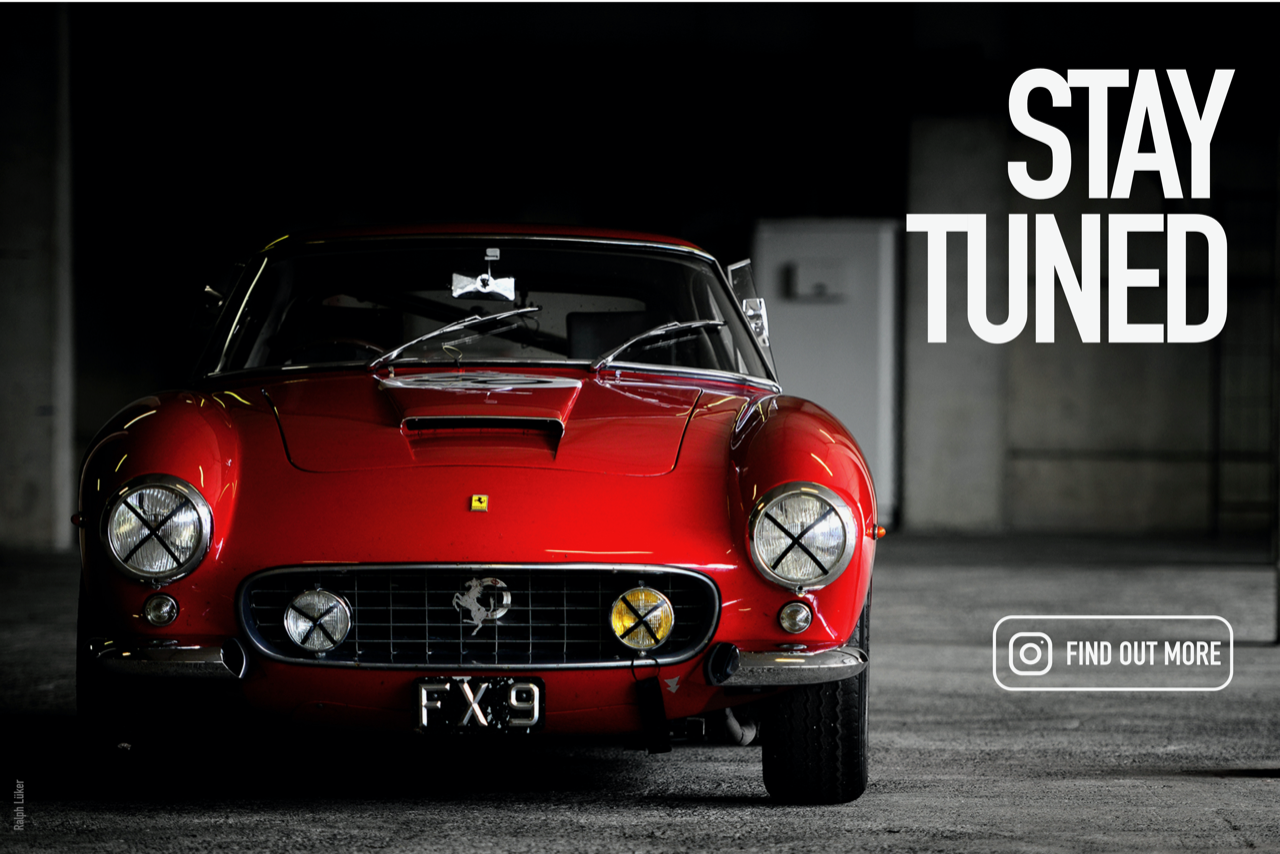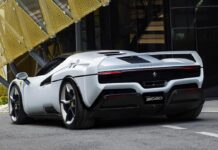This year, The Amelia is celebrating 50 years of Porsche’s 911 Turbo. The car has been a standard bearer and positioned at the top of Porsche’s 911 product line for much of the past five decades. It has also served as the basis for numerous successful Porsche racing cars, including the ubiquitous and dominant 935, which has the rare distinction of being a production-based car that captured overall victory in the 24 Hours of Le Mans. The 911 Turbo posters on many a bedroom wall have marked the aspirations of countless future Porsche owners over the years.
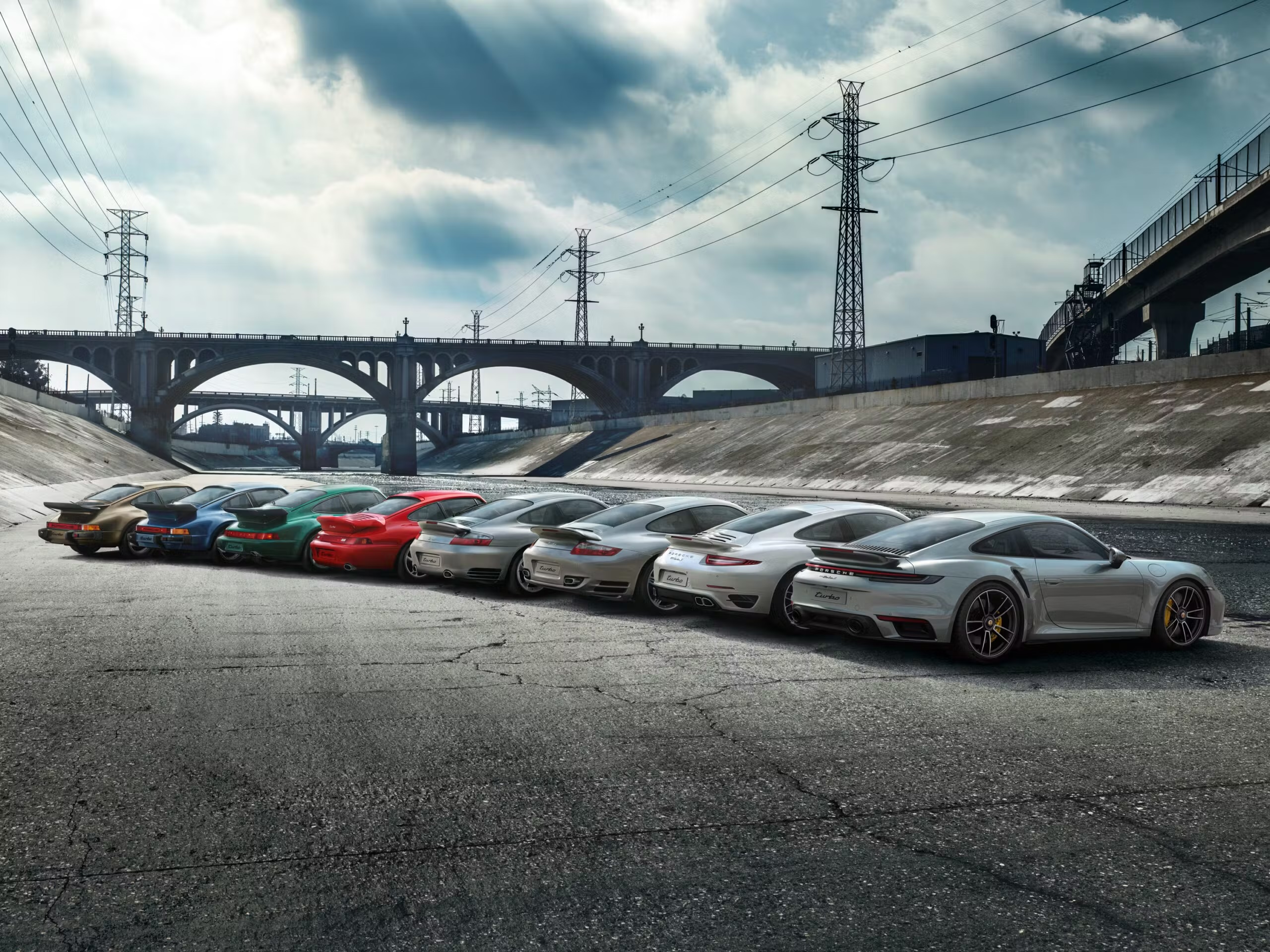
Considered by many to be Porsche’s first “super” car, the 911 Turbo had performance to challenge top-end Italian exotics such as the Lamborghini Countach and the Ferrari 512 BB. It also represented the rapid transfer of technology from racing to the street. Porsche’s first turbocharged racing cars, the 917 Can-Am spyders, had just won championships in 1972 and 1973. The 911-based RSR Turbo very nearly won the 24 Hours of Le Mans in 1974. The 911 was not the first turbocharged production car (that honor went to the 1962 Oldsmobile Jetfire), but it was the first successful turbocharged sports car. It has remained in nearly continuous production over the past 50 years, as each successive generation of the 911 has been produced with a Turbo model.
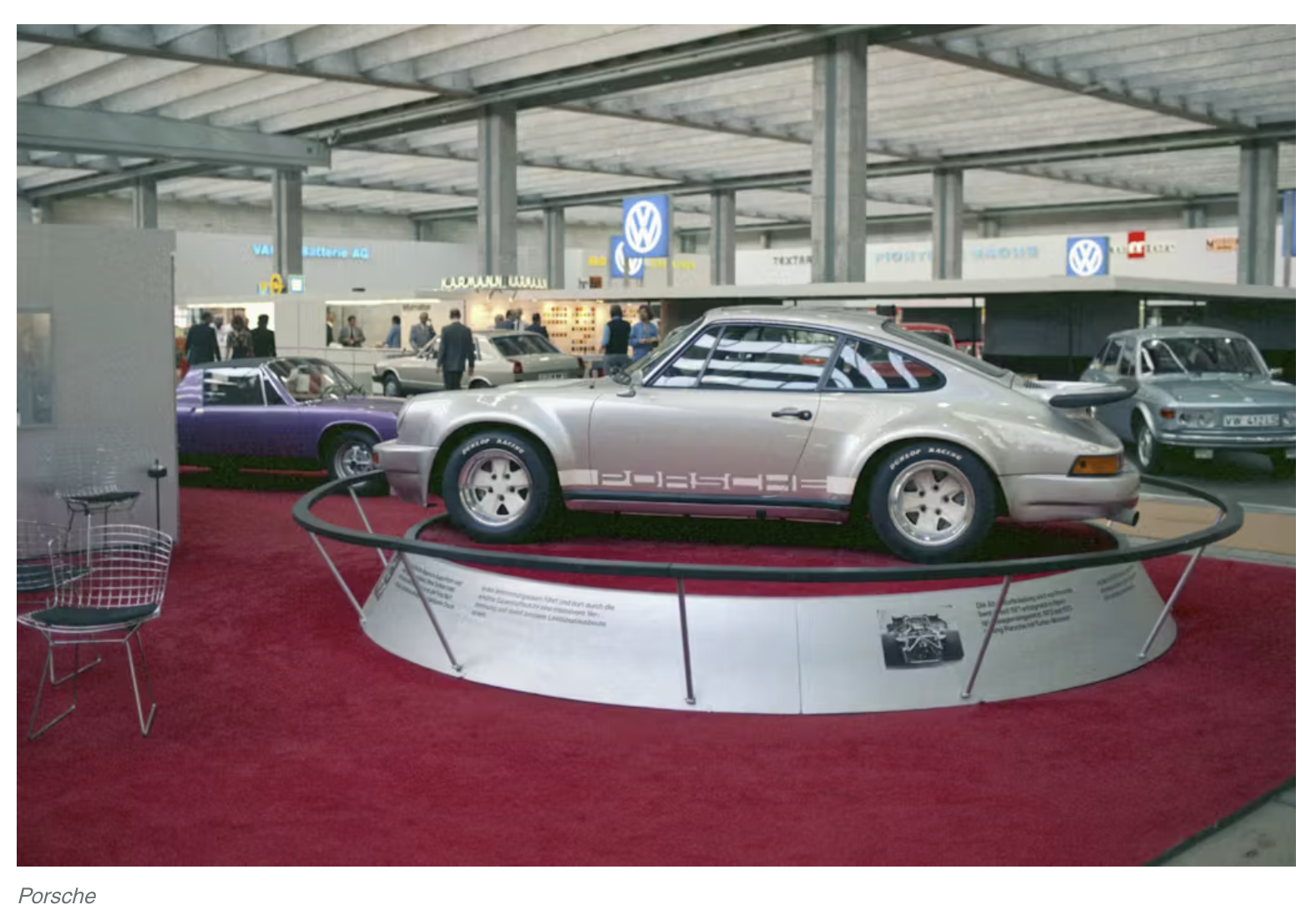
The concept for a turbocharged 911 was first shown at the Frankfurt and Paris auto shows in September and October 1973. Development work was underway even as the 917 spyders were winning championships in Europe and North America. A production version of the 911 Turbo was first shown in the fall of 1974, and cars became available in Europe during the spring of 1975. Initially badged the “Turbo Carrera,” the cars became known by their internal “type” number, 930. The Turbo was heavier and more luxurious than a standard 911 but was easily the fastest Porsche production car to date. Peak output for the European version was set at 260 hp, with a 0-to-60-mph time of about six seconds. For 1978, the Carrera designation was dropped and the 930s were simply identified with “Turbo” script. Engine size of the flat-six increased from the original 3.0 liters to 3.3 liters.
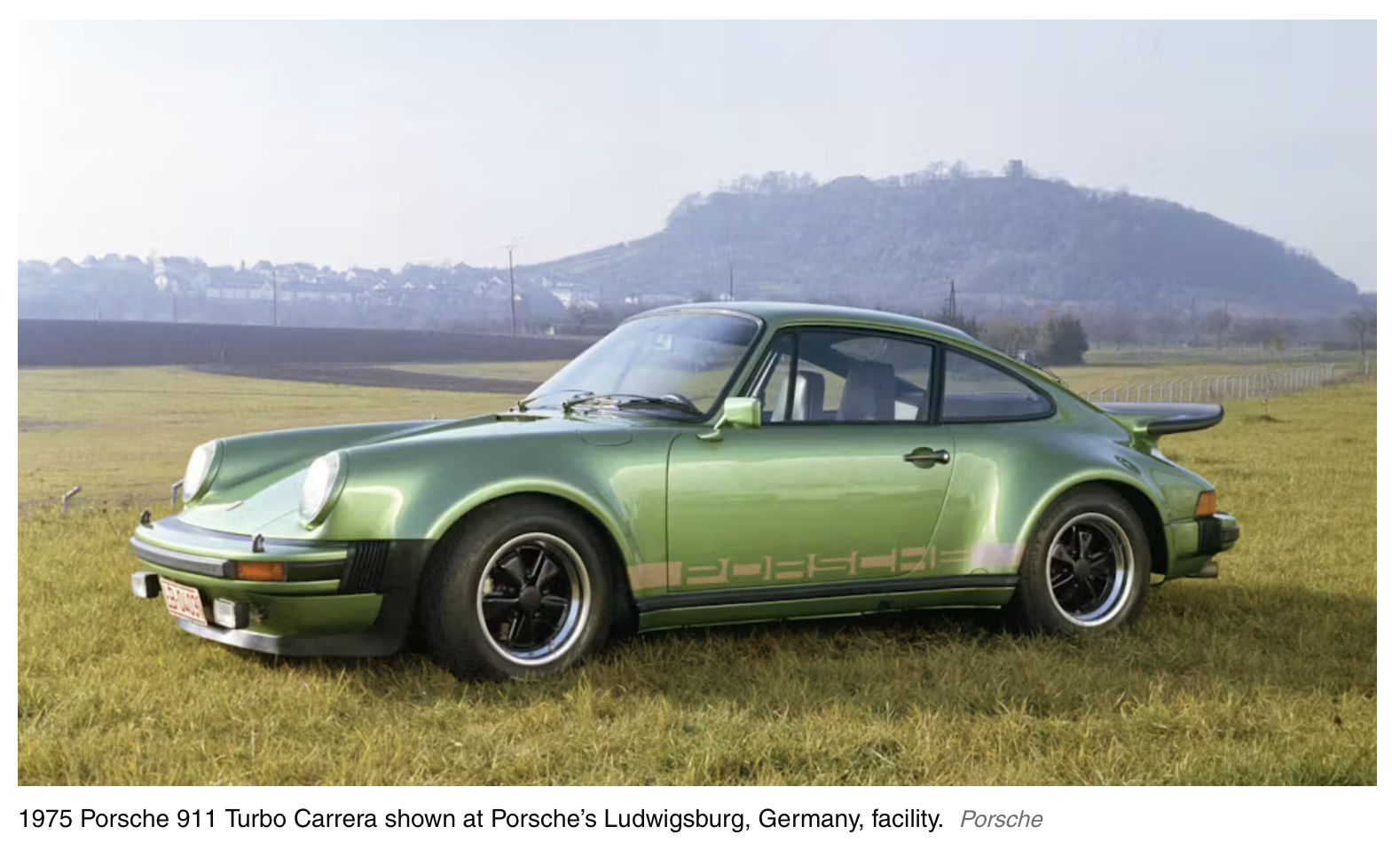
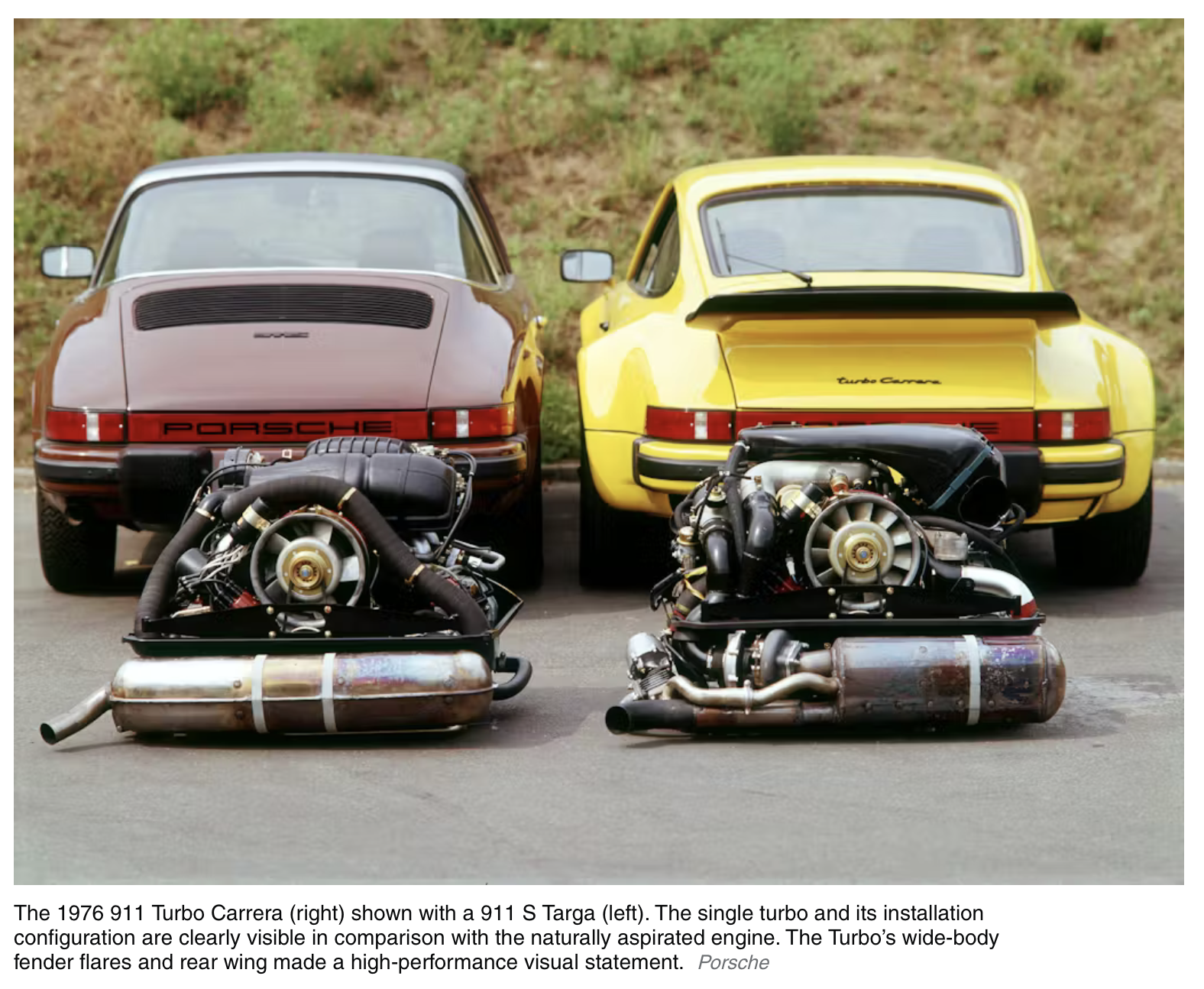
In 1979, the Turbo was discontinued in the U.S. as it was unable to pass emissions testing. It eventually returned to America for the 1986 model year, after Porsche was able to produce an emissions-compliant 930. During the 1980s, tuners such as Ruf extracted ever greater performance from the turbocharged Porsche flat-six, with the famous “Yellowbird” winning Road & Track’s “World’s Fastest Car” designation in 1987.
When Porsche’s early 1990s 964 version of the 911 debuted, the next Turbo was intended to be an entirely different car. Designed under Type numbers 965/969, it was inspired by the 959, Porsche’s 1980s-era supercar. However, development issues and projected costs prevented the 965/969 from production. Porsche then adapted existing 3.3-liter 911 Turbo engines to the 964. The new 3.6-liter engine was eventually turbocharged and installed in the 964 Turbo S, offering 360 horsepower. Its 0–60-mph time was less than five seconds, and it had a top speed of 180 mph.

The final air-cooled 911 Turbos debuted in 1993 with the 993 generation. The 911 Turbo now sported a twin-turbo engine capable of more than 400 horsepower. The cars were offered only with all-wheel drive and continued the tradition of a “wide body” look with extra-curvaceous fender flares. The air-cooled era ended with the 993 Turbo S, further upgraded to 425 horsepower in the U.S. These rare cars are now among the most desirable of 911 Turbos.
The mid-1990s also saw the growth of higher-performance “specials” such as the 911 GT2. This lightweight, thinly disguised racing car for the street could go from 0 to 60 in less than four seconds and had a top speed approaching 190 mph. However, during the 1990s and early 2000s, most extra-high performance 911s were again excluded from the U.S. market, primarily due to emissions regulations.
An all-new, water-cooled Porsche 911 debuted in 1999. The 996-generation Turbo eventually appeared in 2000 as a 2001 model. However, it did not use the standard M96 engine from its sister 911s. Instead, it benefited from Porsche’s decision to create a water-cooled, dry-sump engine based on Porsche engineer Hans Mezger’s earlier 911 and competition architecture. This engine was also adapted to the 911 Turbo after appearing in the first 911 GT3s and 996-based Porsche Supercup racers. Also, unlike its sister 996s, the Turbo had a racier look with flared rear fenders and a unique rear-spoiler/wing combination. For the first time, the 911 Turbo had an optional automatic transmission.
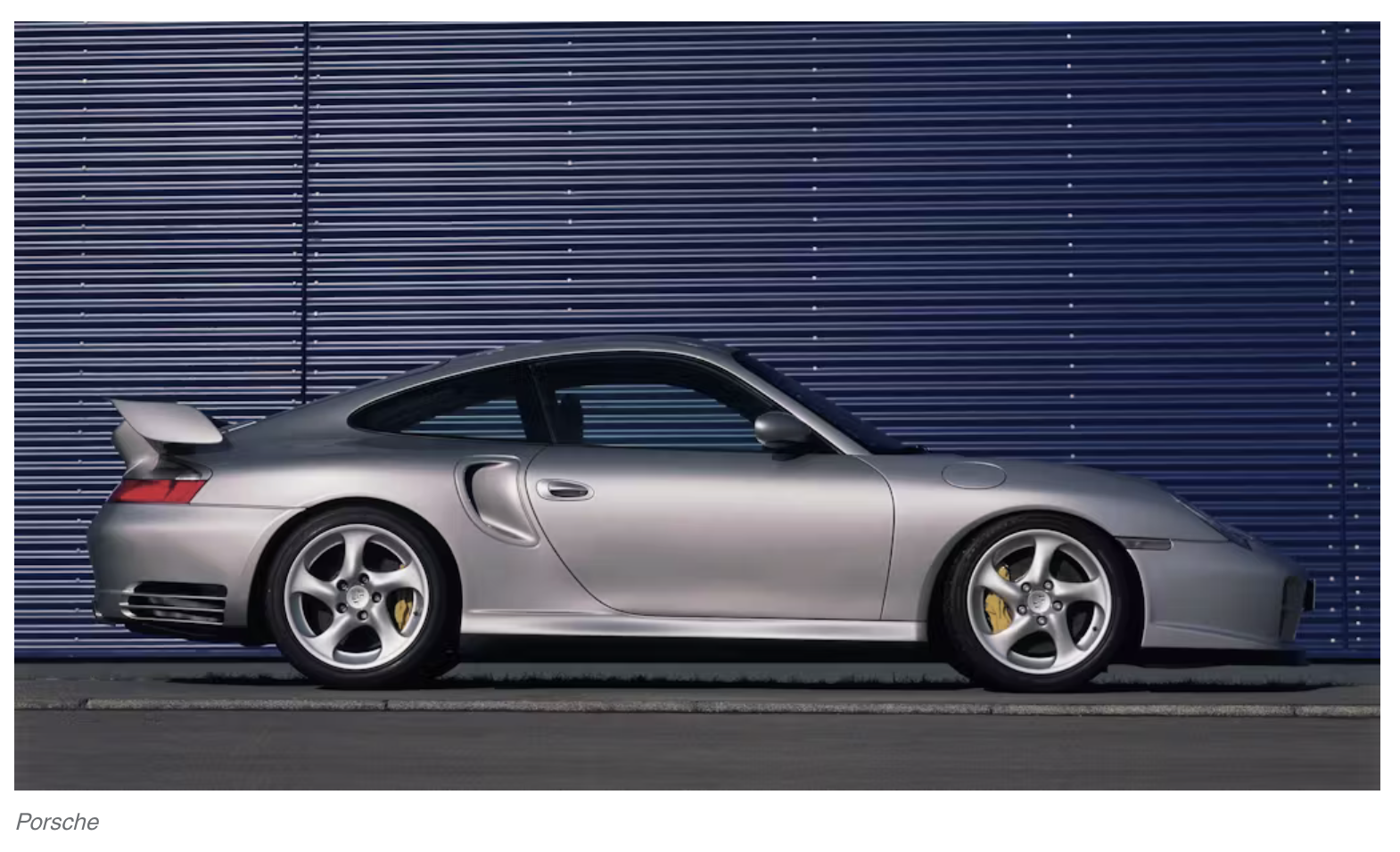
This new 911 Turbo led to developments such as the fearsome 996 GT2, a car capable of 0 to 60 in less than four seconds and a top speed near 200 mph. The rear-wheel-drive GT2 set a new benchmark lap time at the Nürburgring—7 minutes, 47 seconds—a time close to that of the 908/03 racing cars of the early 1970s. The final 996 Turbo S raised the engine output to 450 horsepower, which was just slightly less than the GT2.
The 2000s saw a proliferation of new technologies and driver aids, including carbon-ceramic brakes, stability control, launch control, active suspension management, variable turbine geometry in the turbochargers, and sophisticated electronic performance management. In the mid-2000s, the 997 era of 911 Turbos saw ever-increasing performance. Following an established trend, Porsche engineers produced a more rigid, lower-drag, and all-around better, faster car. Fans appreciated the more shapely, somewhat more traditional 911 styling of the 997. The end of an era arrived in 2008, when Porsche phased out the last Mezger-based Turbo engines.
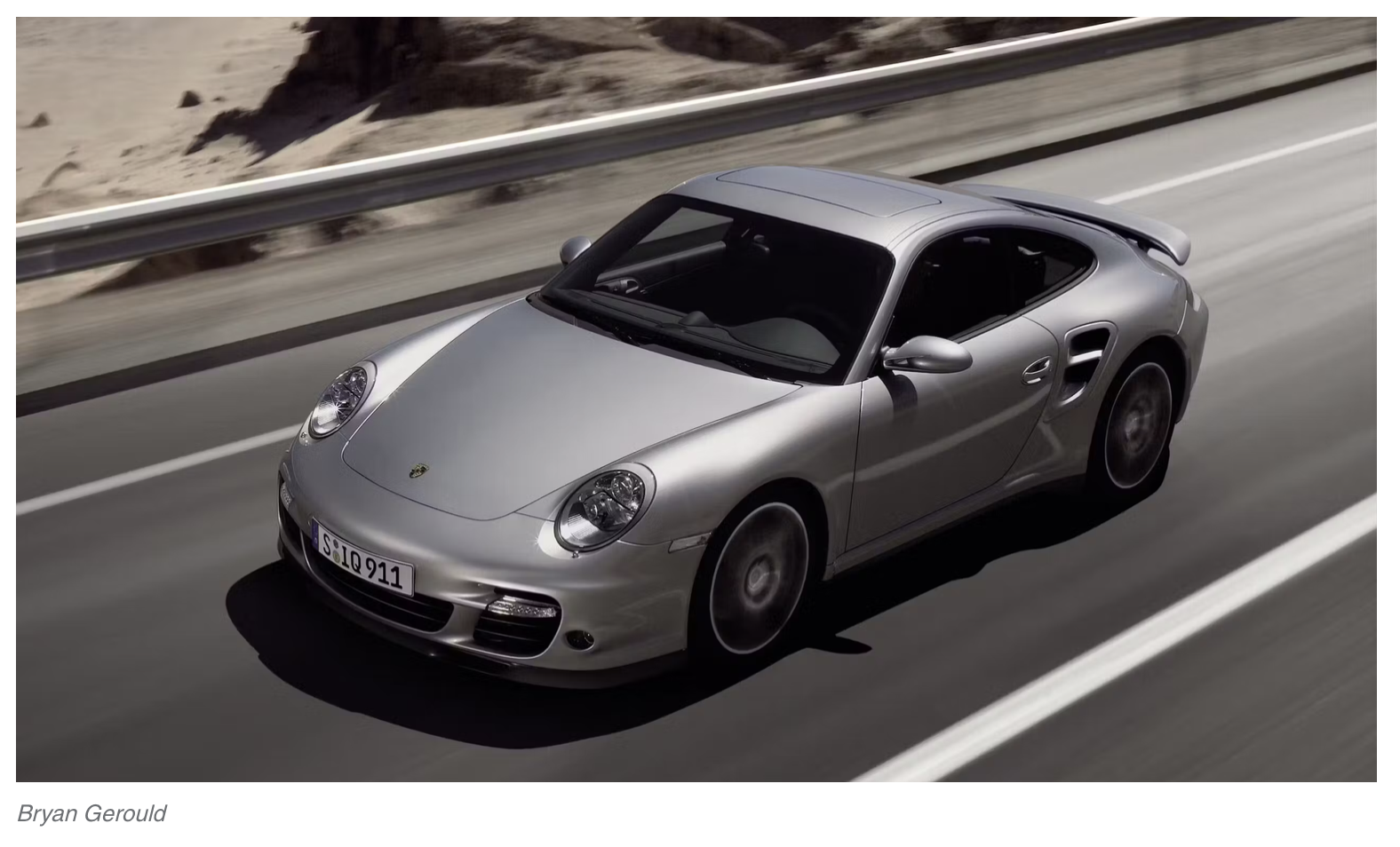
The mid-cycle refresh for the 2009 997s brought an all-new, direct-injection engine to the 911 line that was designed from the beginning to be used in the 911 Turbo. This engine would carry on into the first generation of another all-new 911 platform, the 991. Before that, however, the 997.2 generation introduced Porsche’s double-clutch PDK semi-automatic transmission to the 911 line. With the growing popularity of Porsche’s non-turbo 911 GT3s, the Turbo provided a more comfortable alternative that gave away very little in terms of performance relative to its harder-edged, track-focused stablemates.
In 2015, the mid-cycle refresh for the 991 brought another significant change to the 911. With the 991.2, all 911s (aside from the GT3s) had turbo engines. Turbocharging allowed Porsche to provide improved performance and fuel efficiency even in the base 911. However, this did create a moment of confusion: How to use the “Turbo” designation? Porsche’s decision was to transition the Turbo moniker to signify the top of the 911 range; again, aside from the GT3 and its variants. In 2016, Porsche introduced the 991.2 Turbo and Turbo S.
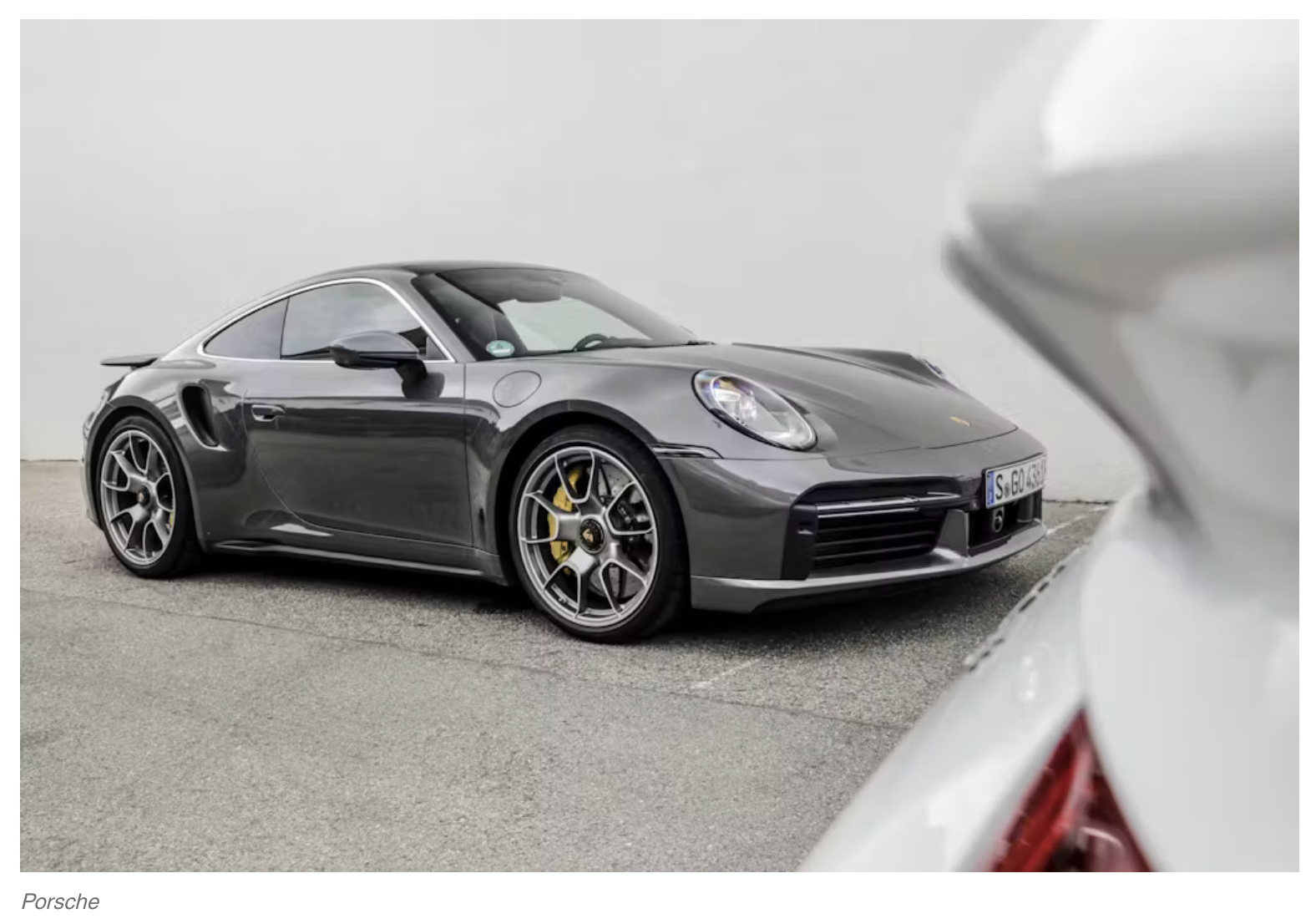
These new Turbos continued to use all-wheel drive and were given 3.8-liter engines making well over 500 horsepower. Porsche applied its standard round of development wizardry to these cars, resulting in numerous changes to optimize turbo-boost pressure. Although the cars were heavy, the Turbo S was two seconds faster around the Nürburgring than a GT3 RS. In 2017, the Turbo S Exclusive edition broke the 600-hp barrier (for a non-GT2 911 Turbo), while the track-focused GT2 RS reached a staggering 700 horsepower.
The latest generation of 911 Turbos, the 992, appeared in 2020. These cars featured counterrotating turbochargers and improved boost control. As with every generation of the 911, Porsche engineers worked to improve the complete intake-to-exhaust “breathing” of the engines. Porsche once again offered a Turbo S and a slightly detuned Turbo version of these 911s, with 641 and 573 horsepower, respectively. In 2024, the refreshed 992.2 911 GTS was announced with a “hybrid” feature using an electric motor to further optimize the speed of the turbochargers. It remains to be seen exactly what Porsche will unleash with the 992.2 911 Turbo, but it is expected to appear in 2025 with hybrid features to boost performance.
The first patent for exhaust-gas turbocharging dates to 1905 and the Swiss engineer Alfred Büchi. Porsche experimented with the technology as far back as 1939 to improve the high-altitude performance of the Volkswagen-based Kübelwagen for the German military. As a maker of automobiles, Porsche first expanded turbocharging beyond the rear-engined 911 in 1978 with the front-engined 924. Today, most new Porsches with internal combustion engines are turbocharged, realizing high performance combined with relatively good fuel efficiency. “Turbo” remains not only a marker of extra-high performance in the 911, but it also extends the brand to the highest-performing version of the Taycan, Porsche’s all-electric (and non-turbo) sports car. Fifty years on, the 911 Turbo continues to expand the legend, the spirit, and the boundaries of performance in Porsche’s flagship sports car.
Report by Jay Gillotti for hagerty.com

